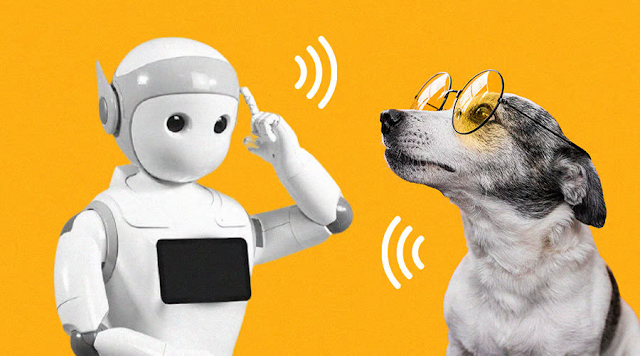Explore how artificial intelligence is revolutionizing our understanding of animal communication, enabling potential two-way conversations and raising ethical questions.
#AnimalCommunication #ArtificialIntelligence #WildlifeConservation #AIRevolution #InterspeciesCommunication #AnimalLanguage #PetCommunication
Scientists are making great progress in decoding animal communication, notably birdsong, utilizing artificial intelligence and modern technology. According to Popular Mechanics, researchers want to develop two-way communication between people and animals, with possible advances anticipated in marine mammal languages due to their largely acoustic nature.
AI in Animal Communication
Artificial intelligence is transforming the area of animal communication studies by providing sophisticated tools for analyzing and interpreting complicated vocalizations. The Earth Species Project, a non-profit organization, is using AI developments to interpret animal communication patterns. Machine learning methods are being created to discover patterns in animal vocalizations and correlate them to observable behaviors, with a focus on birds, dolphins, primates, elephants, and honeybees.
AI's promise in this subject goes beyond just deciphering. It may allow for two-way communication between people and animals, altering our relationship with nature. However, this technical advancement creates fundamental ethical concerns, such as animal consent and the possibility of misusing decoded information. As artificial intelligence (AI) expands the potential for interspecies communication, researchers and ethicists are attempting to establish principles that assure the appropriate development and implementation of these new technologies.
Birdsong as a Communication Model
Birdsong Because of its parallels to human speech, it has emerged as an important model for understanding animal communication and language evolution. Both birdsong and human language are learned during important developmental times, making them excellent candidates for comparative investigation.
Scientists have found seven distinct brain nuclei in vocal learning birds that activate as they perform learned vocalizations. These brain areas are critical for understanding the neurological underpinnings of voice learning and communication. Many bird species' complex vocalizations, which frequently contain syntax-like patterns, present researchers with a well-studied biological system in which to examine the complexities of non-human communication and perhaps draw similarities to human language development.
Real-World Impact
The potential uses of deciphering animal communication go well beyond scientific inquiry, with significant consequences for conservation and our relationship with nature. Understanding animal languages may offer other species a "voice" in environmental decision-making, perhaps guiding policy on matters such as maritime traffic routes that aim to balance human requirements with ecological well-being. In the legal world, interpreting animal communication might give persuasive evidence in animal rights cases, exposing nuanced types of pain that are now impossible to demonstrate.
This innovation may potentially improve wildlife management, captive animal care, and conservation initiatives. For example, the Earth Species Project is already developing AI to separate individual animal vocalizations in complex environments, which could help with population monitoring and conservation efforts.
However, when we open up these new channels of interspecies communication, we must carefully consider the ethical implications, ensuring that our newfound knowledge is utilized responsibly and about animal autonomy and privacy.
Ethical Dilemmas in Research
Decoding animal communication involves distinct issues in addition to technological obstacles. Researchers must deal with the "cocktail party" problem—isolating specific animal signals from background noise in natural environments. Additionally, the wide range of communication methods across species, from chemical signals to complex vocalizations, necessitates interdisciplinary expertise and tailored approaches.
Researchers must carefully consider the impact of their work on animal welfare and ecosystems, ensuring that advances in understanding animal communication lead to improved conservation efforts and interspecies relationships. Concerns about animal consent and autonomy arise when recording and analyzing their communications, as do concerns about the potential misuse of decoded information, such as exploiting animal behaviors for human gain.
About the Writer
Jenny, the tech wiz behind Jenny's Online Blog, loves diving deep into the latest technology trends, uncovering hidden gems in the gaming world, and analyzing the newest movies. When she's not glued to her screen, you might find her tinkering with gadgets or obsessing over the latest sci-fi release.What do you think of this blog? Write down at the COMMENT section below.

No comments:
Post a Comment